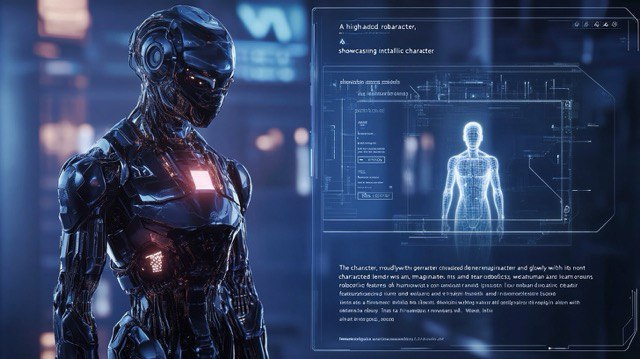
How to Generate a Character
Every author, whether writing comics, screenplays, or novels, faces the challenge of creating vivid and memorable characters for their works. When it comes to characters for anime or video games, not only is a good imagination required, but also drawing skills. However, there is an easier way to create characters for your artistic projects. In this article, we will detail how to generate a character using a neural network.
Is It Possible?
Artificial intelligence models are trained on vast datasets and can create images based on text prompts. Modern AI online services can not only generate a person’s appearance but also take into account personality traits, style, and individual behavioral characteristics.
AI generation helps quickly create protagonists or antagonists for video games that match the style and atmosphere of the game worlds. Artists use neural networks to create characters for comics or illustrations for literary works.
Original images generated by neural networks help marketers promote products and services, run advertising campaigns, visualize brands, and create virtual online assistants for websites. In educational programs, characters are generated for online courses, illustrations of various topics, animation creation, webinars, and video lessons.
How to Generate a Character
Each service provides its own tools for generating images. You can generate a character’s appearance or create realistic or cartoonish animated “live” characters.
How to generate a character using a neural network:
- Choose an online service for generation, such as MidJourney, Character.ai, Artbreeder, or DALL·E.
- Set the main parameters – gender, appearance, age, and other visual characteristics.
- If you need to generate an anime character, specify the genre – cyberpunk, fantasy, hentai, kodomo, etc.
- If you have samples of suitable types, upload photos to show the AI what the created image should approximately look like.
- Describe details of the surrounding environment, background.
- Send a request for generation and wait for the result. It usually takes one or two minutes.
- Edit the result and add additional parameters.
- Integrate the created online character into your project.
Let’s consider generating characters with a specific example: how to generate a character on a white background in MidJourney. MidJourney works through Discord, where you need to have an account. You also need to purchase a subscription.
In the chatbot, make a request specifying the specific parameters. For example, “Create a 15-year-old teenage anime character of male gender with black hair and a creative haircut in casual clothes, standing on a white background.” The more specific details you provide, the more detailed picture you will get.
Moreover, in the latest version of the program, it is possible to transfer the generated character to different situations by assigning a unique name. You can use the same facial features, type, body structure, clothing, and other characteristics to, for example, place the character on a motorcycle, send them to a fictional fantasy world, or a fairy-tale forest. For this, simply set the appropriate prompt, indicating the name of the previously created character. In this way, you can create a whole graphic novel with generated characters using a neural network.
Pros and Cons
Generating online characters in AI-based programs makes the work easier for authors, artists, and designers. In just a few minutes, you can develop new images with detailed features from scratch or get a push for creating unique characters.
Pros of using neural networks for character generation:
- Developing new images takes only a few minutes;
- AI can generate images in various styles, from realism to anime;
- Many services offer free features or a trial period;
- No artistic skills are required, just a description;
- Each AI-generated character is completely unique.
However, in some cases, neural networks produce images with distortions, especially if the parameters are set incorrectly. Sometimes AI incorrectly interprets complex requests involving specific details of appearance or surroundings. Additionally, many services limit users in the number of free generations or tools without a subscription. It should be noted that most problems can be resolved with correctly formatted prompts.
Conclusion
Recent advancements in IT technology allow for the generation of characters for anime, comics, video games, or other projects, as well as creating entire story series featuring fictional heroes. Users can recreate new images without drawing or graphic design skills. Artificial intelligence adapts images to specific requests, considers stylistic features, and creates animated actions.
Despite some limitations and the possibility of incorrect request interpretation, neural networks significantly simplify visualization. This is especially important for fields such as video games, movies, anime, literature, and advertising. To create striking images, it is now possible to do so without the help of artists and designers.

